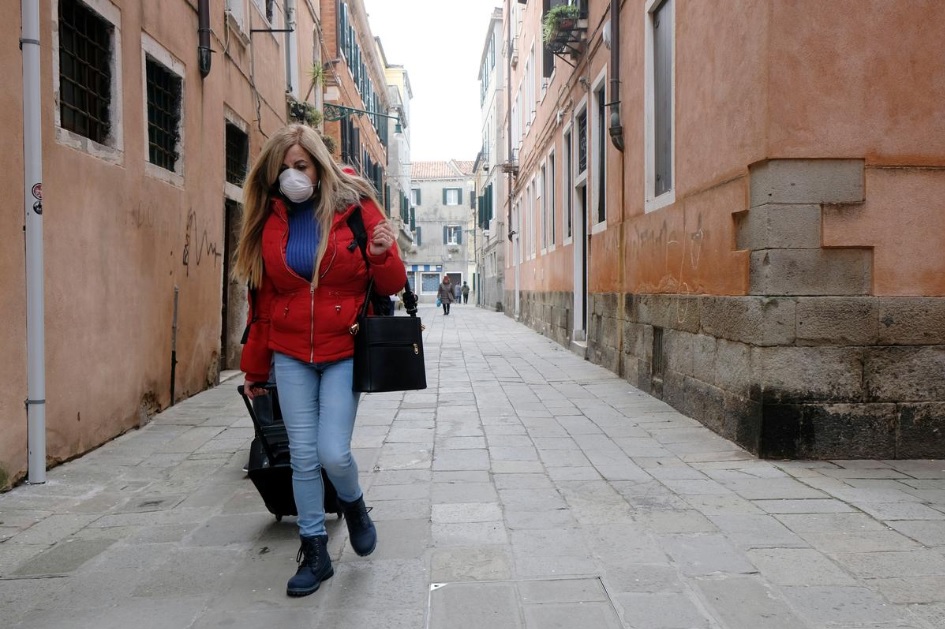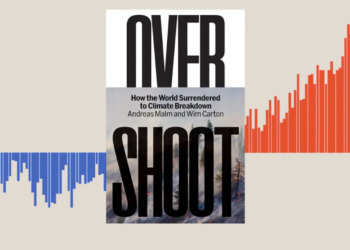Update (9 March 2020): Ten days after this article was published, Italy has quarantined 16 million people in Northern Italy this Sunday and the coronavirus numbers of infected people have skyrocketed over 7300 and 366 deaths. The quarantine is expected to last until 3 April. Meanwhile, the coronavirus has spread worldwide to over 110,000 infected people in 97 countries (over 500 in the U.S.). The coronavirus political risks, however, remain the same, as explained in this article, and the Schengen area, in spite of dire prognostics to the contrary, is surviving the crisis, click here for more information on how to be prepared to take care of your older adults at home and the special needs they will require.
Much space is given in the press to the health threats and economic impact of the coronavirus outbreak, a.k.a. COVID 19 or “novel coronavirus”. By contrast, little is said about the coronavirus political risks, and what is said is often misplaced or misguided.
Recently, with the outbreak of the coronavirus in Italy, now up to 654 cases and 17 deaths (2/28/2020), with the outbreak spreading from Northern Italy to Tuscany and Sicily, many in the mainstream media have suggested that the coronavirus is placing “pressure” on the Schengen area, potentially “threatening” one of the greatest achievements of the European project. New cases were recorded in Austria, Croatia, France, Germany, Greece and Spain, most of them linked to Italy, thus further adding to the argument that Schengen is at risk.
Nothing is further from the truth, and even the Prime Minister of Italy, Giuseppe Conte felt compelled to make it very clear that there is “no problem” with regard to Schengen. Italy’s “red zone” is in full lockdown, there is no need to invoke Schengen rules in this context.
So what are the Schengen rules? The Schengen area, dubbed the “world’s largest free visa zone” where border controls have been progressively abolished since 1985, is a huge area with a population over 420 million across 22 EU member countries plus four non-EU associated countries (Iceland, Liechtenstein, Norway, Switzerland) and some microstates that are small enclaves in larger EU states (Monaco, San Marino, Vatican City, and Andorra).
Schengen member countries apply the so-called “Schengen Acquis” or rules for controlling land, sea and air borders, issuing short-stay visas, police collaboration as well as protection of personal data; and they put in use the Schengen Information System (SIS) the basis for cooperation in law enforcement and protection of external borders. But Schengen rules are not rigid: They allow for the temporary closure of borders in the event “that a serious threat to public policy or internal security has been established”.
So far, temporary border closure has been used in the case of disputes over illegal migrants and terrorist threats. But if the need ever arose to close down borders because of the coronavirus outbreak, it can be done, it is definitely an “internal security” issue. And in fact, following the outbreak in Italy, Austria stopped a train coming from Venice to Munich.
The Real Risk from the Coronavirus Outbreak: Lack of Coordination and Preparedness
The so-called “political risks” caused by the coronavirus outbreak has everything to do with a potential lack of coordination and preparedness of national health systems. This is acute, not in Europe, but elsewhere, especially in low-income countries and places affected by conflict.
For example, this is the case in the Middle East, in particular in Iran where the outbreak has (reportedly) killed 15 people so far – a number many in Iran are doubting:
So far, sub-Saharan Africa and Latin America have no reported cases. But the numbers are rising in Europe and South Korea. A top US health official at the Centers for Disease Control, Nancy Messonnier, has warned that the spread of coronavirus in the country appears to be inevitable.
Is the tipping point for a pandemic near?
Not a Pandemic Yet
WHO is very clear on the use of the word “pandemic”. As WHO Director-General Dr. Tedros Adhanom Ghebreyesus said during a media briefing on 24 February:
“Our decision about whether to use the word pandemic to describe an epidemic is based on an ongoing assessment of the geographic spread of the virus, the severity of the disease it causes, and the impact it has on the whole society. For the moment, we are not witnessing the uncontained global spread of this virus, and we are not witnessing larger scale severe disease or death,”
And he added, “Does this virus have pandemic potential? Absolutely, it has. Are we there yet? From our assessment, not yet.”
As I write (26 February), a first case has appeared in Latin America (according to Brazil’s health ministry, a 61-year-old man who recently traveled to São Paulo from Italy had contracted the coronavirus). But the news out of China are encouraging: The number of infected people has started to decline, with 52 deaths reported in a day, the lowest number in three weeks (that brings the total to 2,715).
In short, containment measures in China appear to be working.
Chinese Containment Measures Appear to be Working
On 25 February, Dr. Bruce Aylward who led the WHO expert mission that spent a month assessing the China response to the coronavirus gave a debriefing on the lessons learned:
Live from Geneva with Dr Bruce Aylward, lead of the #COVID19 international experts mission in #China https://t.co/Hby4bVf7Fx
— World Health Organization (WHO) (@WHO) February 25, 2020
Among the lessons learned, Dr. Aylward highlighted how China took the outbreak seriously, establishing rapid diagnostic and extensive containment measures. This, he said, points to the paramount need for readiness at all levels for all countries around the globe:
Get organized with enough beds, lab capacity for analysis (including CT scanners as did the Chinese), adequate gear, in particular ventilators to overcome the initial acute respiratory crisis that, as the Chinese have discovered, characterizes the disease and differentiates it from normal flu.
There is also, he said, a need to keep the population fully informed to avoid fake news and unnecessary panic. It must be realized that the outbreak cannot be over soon: Based on the experience of similar outbreaks in the past, COVID 19 can be reasonably expected to require at least 120 days to be brought under control. And possibly more.
The sense of helplessness in the face of a virus that is unknown, he noted, can have a devastating impact unless it is countered in time. Hence solid psychological support is absolutely needed for both patients and people in quarantine.
Worldwide, the number of deaths is now over 2600 with over 80,000 infected while survivors now number over 23,000. But, he pointed out, regarding mortality rates, one should refrain from “doing the numbers”: mortality rates will tend to peak at first because people often come in for help too late; the numbers will decrease later in the course of the outbreak as all necessary measures are put in place. The case now in China where deaths have peaked – but not yet so in Italy where deaths have now climbed to 12, all of them older adults with previous on-going pathologies.
Before this number causes panic in anyone, it is worth recalling that the seasonal flu in Italy makes between 300 and 400 victims every year.
While Dr. Aylward was talking, UN Secretary-General Antonio Guterres and WHO’s DrTedros held a conference in Geneva on COVID19 urging all countries to get ready.
The Level of Readiness in Europe: Optimal; Political Risks: Minimal
Europe, with the outbreak in Northern Italy, is in the eye of the storm. A meeting of EU health ministers was convened on 24 February and the EU Commission announced that it was “working on all fronts to support efforts to tackle the COVID19 outbreak” and has already set out the range of appropriate measures:
To be noted: The European support to WHO to assist it in its actions on global preparedness and response and the continuing support to Africa – a constant concern for Europeans who view Africa as its closest neighbor not only geographically but for both historical and cultural reasons.
Basically, Europe is well prepared to deal with the coronavirus outbreak. Political risks are not in the offing. Three strong European-level institutions are in place:
- The EU Commission’s DG for Health and Food Safety located in Luxembourg; a key decision of the European Parliament and Council taken in 2013 improved preparedness and strengthened capacity for a coordinated response to health emergencies;
- the EU Commission’s Migration and Home Affairs, that oversees a number of key policies and agencies, including the Schengen Area;
- the European Center for Disease Prevention and Control (ECDC), a pan-European coordinating mechanism; the ECDC exists since 2004, established as an independent agency of the European Union and located in Solna, Sweden.
Among the three, the ECDC has a central role in keeping trust and coordination afloat across Europe. On 23 February, with regard to the outbreak in Italy, the ECDC made the following threat assessment:
The risk associated with COVID-19 infection for people from the EU/EEA and UK is currently considered to be low to moderate.
Why so conservative? Because, in ECDC’s views, the Italian authorities have taken the right measures, taking “extraordinary public health measure” and making “strong efforts”. This is how they phrased it:
Extraordinary public health measures have been implemented in northern Italy and strong efforts are being made to identify, isolate and test contacts in order to contain the outbreak.
Political Risks in Low-Income Countries: Level of Readiness is a Critical Issue
The problem of lack of readiness is perceptible in low-income countries and here is where political risks are high. Political risks in the basic sense of a societal meltdown. This is particularly true of Sub-Saharan Africa, but also of Latin America, including the Caribbean which sits at the doorstep of the U.S.
This is also where the international community will need to intervene, as it has done in the past when Ebola hit Western Africa and Zika emerged in Brazil.
WHO’s role is and will be crucial to orchestrate the necessary interventions. WHO has learned from Ebola and is far readier today than it was in the early 2010s.
American intervention will also, no doubt be needed. In the Ebola case, thanks to American aid that was pivotal, it took 10 months to bring cases down to 80 percent of their peak level. Whether America can replicate the remarkable response of the Obama administration to Ebola is open to question.
Trump has just sent Congress a $2.5 billion request to combat the coronavirus. Unfortunately, it is much less than the $6.2 billion the Obama administration requested in 2014 to fight the Ebola outbreak (it is also true that we are still very early into the outbreak). However, Trump’s request instantly caused negative reactions from both Democrats and Republicans.
It is difficult to believe that Trump is serious about health matters when the budget proposal he just sent Congress cut the C.D.C.’s budget by almost 16 percent, and the Department of Health and Human Services’s by almost 10 percent. Notably, the proposal’s $3 billion in cuts to global health programs included a 53 percent cut to the World Health Organization and a 75 percent cut to the Pan American Health Organization. The Trump administration is clearly not interested in international cooperation.
If the coronavirus outbreak turns into a pandemic, one would hope that America will be able to play the decisive role it has played in the past. Will Trump be able to rise to the occasion?
Featured image: A woman wears a protective face mask as she walks in Venice, Italy February 24, 2020. REUTERS/Manuel Silvestri ANSA news agency










